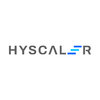Filter interviews by
Mercury Fabrics Interview Questions and Answers
11 Interview questions
Dyeing is the process of adding color to textiles or other materials.
Dyeing involves immersing the material in a dye solution to color it.
Different types of dyes are used, such as natural dyes, synthetic dyes, and reactive dyes.
The dyeing process can be done using various methods like immersion dyeing, tie-dyeing, and batik dyeing.
Dyeing can be done on fabrics, yarns, fibers, or even hair.
Dyeing is an important st...
Various machines are used in fabric dyeing process, including dyeing machines, jiggers, winches, and jet dyeing machines.
Dyeing machines are commonly used for dyeing fabrics in bulk.
Jiggers are used for dyeing fabrics in smaller quantities.
Winches are used for dyeing fabrics that require special treatment.
Jet dyeing machines are used for dyeing fabrics with high efficiency and speed.
The machine's capacity refers to the maximum amount of work it can handle or produce within a given time frame.
Machine capacity can be measured in terms of units produced per hour, pieces processed per minute, or any other relevant metric.
It is important to consider factors such as downtime, maintenance, and efficiency when determining the machine's capacity.
For example, a CNC machine may have a capacity of produc...
The pH of salt hold position in cotton dyeing is typically around 4.5 to 5.5.
pH of salt hold position is crucial for dye fixation in cotton fibers
Maintaining the correct pH helps in achieving desired color fastness and dye penetration
Common pH range for salt hold position in cotton dyeing is 4.5 to 5.5
The pH of Polyester dyeing typically ranges from 4 to 6.
Polyester dyeing process requires an acidic pH level for optimal results.
The pH range of 4 to 6 is commonly used to ensure proper dye absorption and color fastness.
Maintaining the correct pH level is crucial to achieve desired color outcomes in polyester dyeing.
Examples of pH modifiers used in polyester dyeing include acetic acid and citric acid.
Flow chart of dyeing process for cotton and polyester involves multiple steps including preparation, dyeing, rinsing, and finishing.
Preparation: Pretreatment of fabric to remove impurities and improve dye absorption.
Dyeing: Immersing fabric in dye bath and applying heat to fix the color.
Rinsing: Washing fabric to remove excess dye and chemicals.
Finishing: Treating fabric to improve softness, durability, and appear...
Reactive dyes are commonly used in cotton dyeing, while disperse dyes are used in polyester dyeing.
Reactive dyes are used in cotton dyeing as they form a covalent bond with the cotton fibers, resulting in excellent color fastness.
Disperse dyes are used in polyester dyeing because they have low solubility in water and high affinity for polyester fibers.
Other dyes like direct dyes, vat dyes, and sulfur dyes are also...
Vat dyes are a type of dye that are insoluble in water and require a reducing agent to become soluble and dye the fabric.
Vat dyes are primarily used for dyeing cellulose fibers like cotton, but can also be used on other fibers like silk and wool.
Examples of vat dyes include Indigo, Tyrian purple, and Alizarin.
The process of dyeing with vat dyes involves reducing the dye to a soluble form, then oxidizing it back to...
Ensuring fabric meets customer standards involves quality checks, specifications adherence, and continuous improvement processes.
Understand customer specifications: Review the fabric requirements provided by the customer, including material type, weight, and color.
Conduct quality inspections: Implement regular inspections during production to ensure the fabric meets the defined standards.
Use standardized testing m...
Knits fabric quality involves assessing texture, durability, and performance to ensure high standards in textile production.
Evaluate yarn quality: Use high-quality fibers to enhance fabric strength and softness.
Check stitch density: Ensure consistent stitch count to prevent unraveling and improve durability.
Assess colorfastness: Test for resistance to fading and bleeding during washing.
Conduct stretch tests: Measu...
Mercury Fabrics Interview Experiences
3 interviews found
(6 Questions)
- Q1. What is the dyeing ?
- Ans.
Dyeing is the process of adding color to textiles or other materials.
Dyeing involves immersing the material in a dye solution to color it.
Different types of dyes are used, such as natural dyes, synthetic dyes, and reactive dyes.
The dyeing process can be done using various methods like immersion dyeing, tie-dyeing, and batik dyeing.
Dyeing can be done on fabrics, yarns, fibers, or even hair.
Dyeing is an important step in...
- Q2. Which dyes used in cotton dyeing and Polyester dyeing ?
- Ans.
Reactive dyes are commonly used in cotton dyeing, while disperse dyes are used in polyester dyeing.
Reactive dyes are used in cotton dyeing as they form a covalent bond with the cotton fibers, resulting in excellent color fastness.
Disperse dyes are used in polyester dyeing because they have low solubility in water and high affinity for polyester fibers.
Other dyes like direct dyes, vat dyes, and sulfur dyes are also used...
- Q3. PH of Polyester dyeing ?
- Ans.
The pH of Polyester dyeing typically ranges from 4 to 6.
Polyester dyeing process requires an acidic pH level for optimal results.
The pH range of 4 to 6 is commonly used to ensure proper dye absorption and color fastness.
Maintaining the correct pH level is crucial to achieve desired color outcomes in polyester dyeing.
Examples of pH modifiers used in polyester dyeing include acetic acid and citric acid.
- Q4. PH of salt hold position in cotton dyeing ?
- Ans.
The pH of salt hold position in cotton dyeing is typically around 4.5 to 5.5.
pH of salt hold position is crucial for dye fixation in cotton fibers
Maintaining the correct pH helps in achieving desired color fastness and dye penetration
Common pH range for salt hold position in cotton dyeing is 4.5 to 5.5
- Q5. Flow chart of dyeing process for cotton and Polyester ?
- Ans.
Flow chart of dyeing process for cotton and polyester involves multiple steps including preparation, dyeing, rinsing, and finishing.
Preparation: Pretreatment of fabric to remove impurities and improve dye absorption.
Dyeing: Immersing fabric in dye bath and applying heat to fix the color.
Rinsing: Washing fabric to remove excess dye and chemicals.
Finishing: Treating fabric to improve softness, durability, and appearance.
...
- Q6. Dyes Name of vat dye ?
- Ans.
Vat dyes are a type of dye that are insoluble in water and require a reducing agent to become soluble and dye the fabric.
Vat dyes are primarily used for dyeing cellulose fibers like cotton, but can also be used on other fibers like silk and wool.
Examples of vat dyes include Indigo, Tyrian purple, and Alizarin.
The process of dyeing with vat dyes involves reducing the dye to a soluble form, then oxidizing it back to its ...
(4 Questions)
- Q1. Which machine's used in fabric dyeing ?
- Ans.
Various machines are used in fabric dyeing process, including dyeing machines, jiggers, winches, and jet dyeing machines.
Dyeing machines are commonly used for dyeing fabrics in bulk.
Jiggers are used for dyeing fabrics in smaller quantities.
Winches are used for dyeing fabrics that require special treatment.
Jet dyeing machines are used for dyeing fabrics with high efficiency and speed.
- Q2. Machine's capacity ?
- Ans.
The machine's capacity refers to the maximum amount of work it can handle or produce within a given time frame.
Machine capacity can be measured in terms of units produced per hour, pieces processed per minute, or any other relevant metric.
It is important to consider factors such as downtime, maintenance, and efficiency when determining the machine's capacity.
For example, a CNC machine may have a capacity of producing 1...
- Q3. Color tone of color Name ?
- Ans.
Color tone refers to the lightness or darkness of a color, often described as being warm or cool.
Color tone can be warm (reddish, yellowish) or cool (bluish, greenish)
Lighter tones are considered warm, while darker tones are considered cool
Examples: Warm tone - coral, Cool tone - teal
- Q4. What is name of company, use which color ?
- Ans.
The name of the company is XYZ Corporation and the color used is blue.
Company name: XYZ Corporation
Color used: Blue
Interview Preparation Tips
So my humble request that learn more your subject.
I applied via Naukri.com and was interviewed in Jul 2022. There were 6 interview rounds.

Persnol Interview, Previous Company Project Details
Loop Knowledge, Swapping Numbers program
(2 Questions)
- Q1. Crude Opration ,Design DataBase
- Q2. Why You Leave Your Current Company
Why You Join Our Company ,what About Your Current Project
Educational discussion, family background
Interview Preparation Tips
I appeared for an interview before Jun 2024, where I was asked the following questions.
- Q1. 4 point system
- Q2. Problem rectified
- Q3. Fabric quality inspection
- Q4. Fabric as per standard
- Ans.
Understanding fabric standards ensures quality, consistency, and compliance in textile production.
Fabric standards define specifications for weight, weave, and finish, ensuring uniformity.
For example, a standard cotton fabric might specify a weight of 150 GSM.
Compliance with industry standards like ISO or ASTM helps in quality assurance.
Testing for colorfastness and shrinkage is crucial to meet fabric standards.
- Q5. Fabric as per customer standard
- Ans.
Ensuring fabric meets customer standards involves quality checks, specifications adherence, and continuous improvement processes.
Understand customer specifications: Review the fabric requirements provided by the customer, including material type, weight, and color.
Conduct quality inspections: Implement regular inspections during production to ensure the fabric meets the defined standards.
Use standardized testing method...
- Q6. Knits fabric quality
- Ans.
Knits fabric quality involves assessing texture, durability, and performance to ensure high standards in textile production.
Evaluate yarn quality: Use high-quality fibers to enhance fabric strength and softness.
Check stitch density: Ensure consistent stitch count to prevent unraveling and improve durability.
Assess colorfastness: Test for resistance to fading and bleeding during washing.
Conduct stretch tests: Measure el...
- Q7. Gsm verification
- Q8. Width verification
- Q9. Fabric apperance
- Q10. Fabric roll to roll check
Top trending discussions






Interview questions from similar companies

I applied via Naukri.com and was interviewed in Sep 2019. There was 1 interview round.
Interview Questionnaire
5 Questions
- Q1. Question 1)Tell me about yourself and qualifications?
- Ans.
I am a recent graduate with a degree in Computer Science and experience in web development.
Recent graduate with a degree in Computer Science
Experience in web development
Strong problem-solving skills
Proficient in programming languages such as Java, JavaScript, and HTML/CSS
- Q2. Question 2)What are your hobbies?
- Ans.
My hobbies include reading, hiking, and playing the guitar.
Reading: I enjoy reading fiction and non-fiction books in my free time.
Hiking: I love exploring nature trails and challenging myself with new hikes.
Playing the guitar: I have been playing the guitar for several years and enjoy learning new songs.
- Q3. Question 3)What do you know about our company?
- Ans.
Our company is a leading tech startup specializing in AI-driven solutions for businesses.
Specializes in AI-driven solutions for businesses
Considered a leading tech startup in the industry
Known for innovative and cutting-edge technology
Has a strong focus on research and development
Provides services to a wide range of industries
- Q4. Question 4) Why do you want to join our company?
- Ans.
I want to join your company because of its innovative projects, strong company culture, and opportunities for growth.
Innovative projects that align with my interests and skills
Strong company culture that values collaboration and employee development
Opportunities for growth and advancement within the company
- Q5. Question 5) Tell me about your training and projects you have done in college?
- Ans.
I completed various training programs and projects during my college years, gaining hands-on experience in different areas.
Completed a training program in data analysis using Python and R
Developed a mobile application for a class project using Java and Android Studio
Participated in a research project on renewable energy sources
Completed an internship at a local software company, working on web development projects
Interview Preparation Tips

I applied via Naukri.com and was interviewed in Jun 2020. There were 3 interview rounds.
Interview Questionnaire
1 Question
- Q1. All the questions were relevant to my domain knowledge.
Interview Preparation Tips
The rest is in the hands of the interviewer.

Interview Preparation Tips
Experience: CAT-type data interpretation test.30 questions in 35 minutes.Fast graph interpretation and quick calculations.
Tips: CAT preparation will help.
Duration: 35 minutes
Total Questions: 30
Round: Case Study Interview
Experience: A simple case, based on the credit card industry or any other field, is given. Cases lay more focus on quantitative skills apart from the focus on asking the right questions.There is a shortlist made after each case round.
Tips: Fast calculation and insight into what data may be required to solve the case are essential.Practice the cases given on their website and at www.beprepared.in.
Round: Behavorial Interview
Experience: Questions are asked based on incidents- give examples of instances when you led a team successfully or when you had to go against your team, etc.
Tips: Practice HR questions from HLPQ.
General Tips: Positions Of Responsibility (PORs) are required but not mandatory. They are of secondary importance if one has scored well in the exam. A good CV with good internships/projects will help one to get shortlisted.
Skill Tips: "Student needs to be quick with simple percentage calculations."
Skills: Basic Quantitative skills
College Name: IIT Kharagpur

Interview Preparation Tips
Experience: Written Test ( DI questions, each involving 2-3 plots)
Round: Interview
Experience: Started with a “Tell me something about your-self question”. I believe it was just to set the ball rolling and was not evaluated. The interviewer then gave me a case question wherein I had to make a choice between a diesel and a petrol car. There were 3 parts to the question (some candidates were asked 1 / 2 as well). The first dealt with finding the breakeven point given the basic set of cost, fuel price and fuel consumption data. Next was to find breakeven considering the money was acquired at a certain rate of interest (bond/loan). Both these results involved basic calculation and I was comfortable with them. The final part was about calculating the breakeven, again, but this time considering depreciation. This is where I was caught off guard and though I did turn up with a figure, the interviewer was not completely satisfied.
General Tips: Do get a basic background of the firm and also about terms in the related field.
Skill Tips: I was not hesitant and was reasonably confident while answering. What went wrong was perhaps the fact that I was caught unaware of how depreciation works and how it had to be included in the equation. I fumbled a lot with the equation and puzzled as to where to include terms for depreciation etc.
College Name: IIT KANPUR

Interview Preparation Tips
Experience: There was test which was purely data analysis and calculator was allowed. So the procedure that they follow is that first they shortlist 50 people and a small case interview is followed. The case I was asked was to calculate the change in the cost of a grocery store if it has changed its model from cash on delivery with a physical store to an online portal which has cash on delivery option. As I had practiced it already I took some time to give structure and then gave 3-4 reasons for change in cost and then he gave me some numbers based on which I had to calculate the break even time period or amount . But I think he expected a little bit different approach or was searching for a different solution as I wasn't selected for the final interview sessions. I think 22 people were selected for the final interview session out of which 2 people were finally selected in Cap One.
College Name: IIT KANPUR

Interview Preparation Tips
Experience: I started my placement journey by getting shortlisted in Capital One on Day 1. They shortlisted 125 candidates on the basis of resume.
Round: Case Study Interview
Experience: Then, they took a case study interview and reduced the number to 30.
Round: Test
Experience: Then, they again took an aptitude test and selected none of them. But, on the day 2, I sat for the GDs and interviews of Coca Cola and got selected.
College Name: IIT KANPUR

Interview Preparation Tips
Experience: There was initially an interview of about 5 mins in which they asked me to describe a situation where I worked in a team.
Round: Case Study Interview
Experience: Then there was a case study round. It was a slightly involved case on the credit card industry and involved a lot of
calculations. There were 3 different credit card strategies with different rates of interest and credit limits and we had to choose the best strategy for the company. I came up with correct strategy and hence got through the first round.
The 2nd case was that of Dominos evaluating a new scheme wherein they would offer a 30% discount instead of 100%, in cases where the pizzas could not be delivered within 30 minutes. Next the discount was changed to 70%. I was asked to evaluate the on-time delivery that they can risk not to have in order to make the same profit as they make when they give 100% discount and have 90% on-time delivery. Then I was asked to plot a graph between on-time delivery and the discount offered and interpret it. It was there that I lost track and couldn't come up with the right conclusion. Nevertheless I was selected for the next round.
Round: Behavioural Interview
Experience: It was a behavioral interview wherein I had to describe them 3 situations in detail. During the entire interview the interviewer kept writing something on the paper. The key to this round was choosing the right incidents and then describing each and every point in detail. It lasted for about 30 mins. Ideally there were to be only 2 rounds of case interview and one behavioral interview but I was again called for a 3rd case interview round. It was very similar to the 1st case except that the credit card company was replaced by a dish-tv one. This one didn't go very well as I was very much exhausted and hence faltered at several places.
College Name: IIT KANPUR
Mercury Fabrics Interview FAQs
Tell us how to improve this page.
Interview Questions for Popular Designations
Overall Interview Experience Rating
based on 7 interview experiences
Difficulty level
Duration
Interview Questions from Similar Companies
Mercury Fabrics Reviews and Ratings
based on 45 reviews
Rating in categories
|
Executive Accountant
16
salaries
| ₹2.7 L/yr - ₹4 L/yr |
|
Merchandiser
9
salaries
| ₹2.4 L/yr - ₹5.5 L/yr |
|
Assistant Manager
8
salaries
| ₹5.5 L/yr - ₹8.4 L/yr |
|
Utility Manager
6
salaries
| ₹9 L/yr - ₹9.5 L/yr |
|
Senior Manager
5
salaries
| ₹8.5 L/yr - ₹9.5 L/yr |

Huawei Technologies

Z X Learning

Evision Technoserve

Lea Associates South Asia
- Home >
- Interviews >
- Mercury Fabrics Interview Questions










